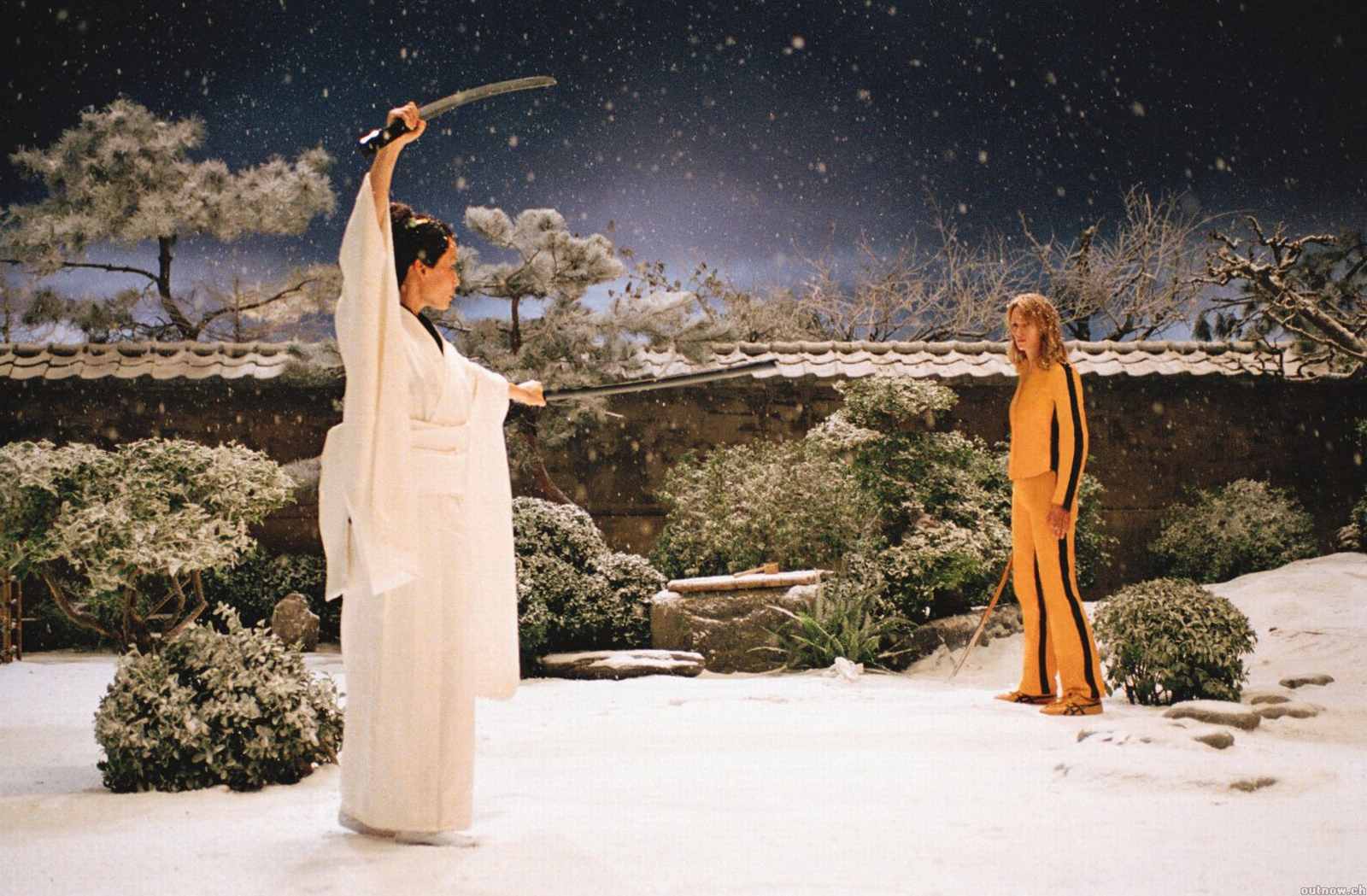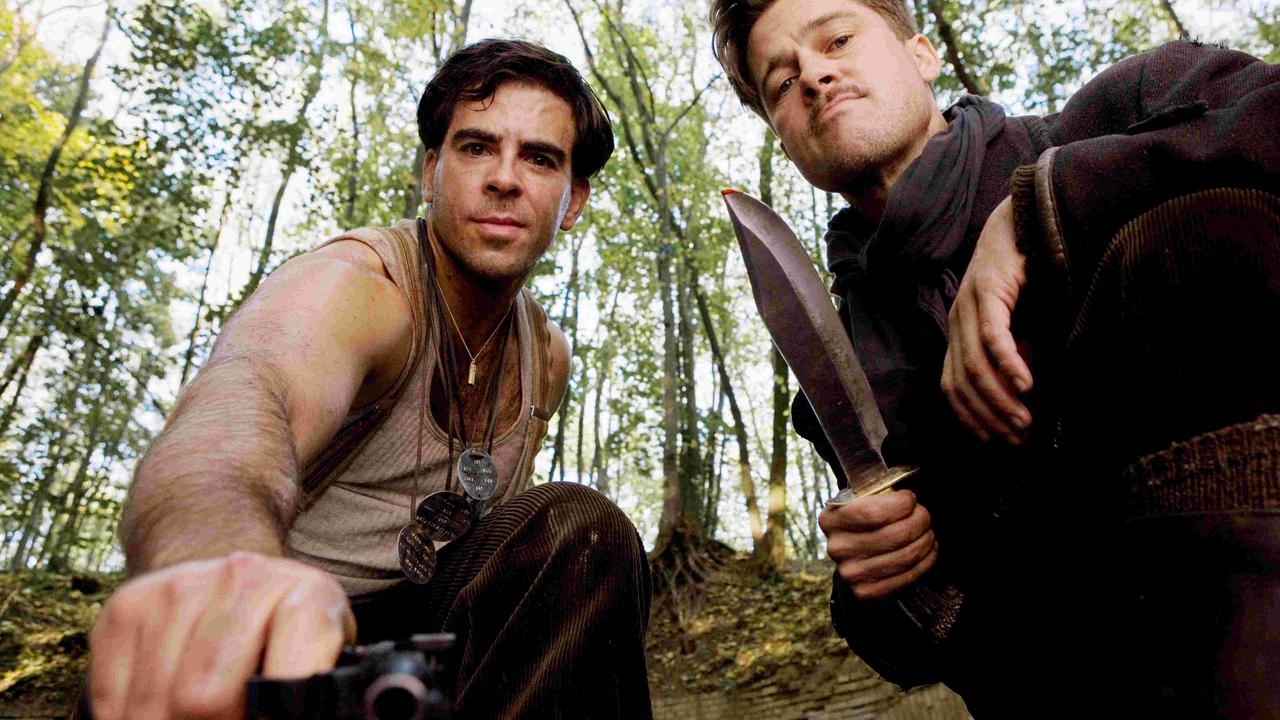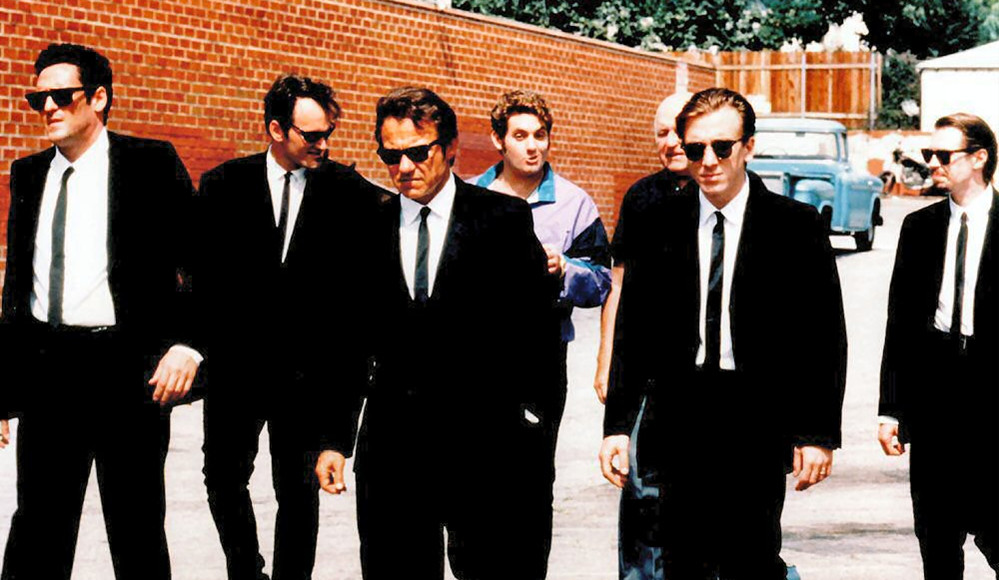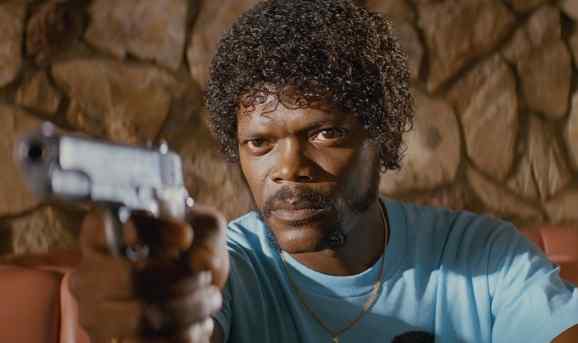4. Kill Bill (2003-2004)

An epic tale of revenge, Kill Bill saw Tarantino leave L.A for a more global, Asia-facing film. A strange mishmash of the retribution narrative, Samurai story and Hong Kong movie, with scores of references to East Asian cinema, Kill Bill saw Tarantino expand his skill-set to exhilarating effect.
Starring Uma Thurman in what is probably her career-defining role, it told the story of a bride violently jilted at the altar slowly enacting revenge on everyone who wronged her, leading up to the eponymous Bill himself.
In his previous films he was known for his violent sequences, but Kill Bill takes everything up a notch, adding real fighting technique, martial arts and swordplay into the mix. The final sequence of the first volume, a no-holds barred fight sequence where the Bride takes on scores of men with only a katana for comfort, has the finest choreography in Tarantino’s career. With Bruce Lee set to be a character in his upcoming Once Upon A Time In Hollywood, can we expect a return to the same well of myth-making and hyper-violent choreography?
3. Inglourious Basterds (2009)

An alternative history class on WW2 that delights in long-overdue retroactive justice, Inglourious Basterds is Tarantino’s unique take on films such as The Dirty Dozen. Concerning a group of American Nazi hunters hellbent on killing Hitler, it features some of the best suspense scenes in Tarantino’s career and a barnstorming performance by Christoph Waltz as SS Officer Hans Landa. Historical revisionism has rarely been as fun as this, Tarantino really stamping his own personality upon the WW2 genre.
It represented a more direct moral turn in Tarantino’s work. Instead of implicitly setting up moral conundrums through his complex characterisation, he would more directly take evil and its many faces to task, especially in his later film Django Unchained.
Landa is perhaps the best character Tarantino has ever written, a man fastidiously dedicated to his job of catching Jews, and combines dry sarcasm, droll wit and various English idioms with ease. His mission may be abhorrent, but the performance by Christoph Waltz is one for the ages, deservedly winning the Academy Award for Best Supporting Actor.
2. Reservoir Dogs (1992)

In the very opening scene, a swirling tracking shot of black-suited gangsters discussing the themes of Madonna’s Like A Virgin, Tarantino places us to a world that is both familiar and different. This is the charm of his films; by understanding the tropes of action cinema so well, he finds new ways to approach the genre to make them feel exciting again.
It was a fresh take on the heist genre, never showing us anything from the actual robbery itself. Reminiscent of Stanley Kubrick’s The Killing, its complicated non-linear structure really helps us to get an idea of who these people are and why they got involved in such a cockeyed scheme.
Tim Roth excels as an undercover cop in what is his best role. It is perhaps best known for its incredibly violent scene where Mr Black, played by Michael Madsen, cuts the ear off a cop to the sound of Stealers Wheel’s “Stuck in The Middle With You”. This combination of ironic violence and black humour is key to understanding Tarantino’s style, as this is a director who doesn’t aim for realism, but instead movies about the power of cinematic tropes themselves.
1. Pulp Fiction (1994)

Cannibalising three distinct b-movie tropes — the gangster taking out his bosses girl, the boxer forced to throw a fight and the gangster reconsidering his life choices — together into something totally new, Pulp Fiction blew audiences away when it premiered at Cannes in 1994.
The rare movie without a single boring or superfluous scene, it still feels ahead of its time. Bringing the innovation and flair of French New Wave, especially Godard’s Breathless and Bande à Part, together with the stories of Elmore Leonard, Raymond Chandler and Dashiell Hammett, Pulp Fiction completely transformed American cinema in the 90s.
Its uniquely circular narrative means that you can watch the film several times and still not be exactly sure which episode comes next. This pleasurable storytelling device, combined with one of the keenest soundtracks ever committed to film, makes Pulp Fiction an endlessly re-playable movie. This structure, combined with a self-reflexive narrative, pop culture savvy characters and endless homages to other films, have led many to call it the quintessential postmodern film.
Its influence, both in form and content, can be seen everywhere, including films as diverse as Memento, Things to Do in Denver When You’re Dead, Under The Silver Lake, The Usual Suspects and, over the pond, in the films of Guy Ritchie. Often included in lists of the greatest American films of all time, it’s unlikely that Tarantino will better it again.